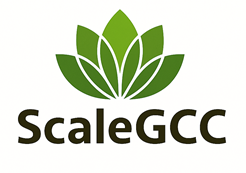Now Reading: Outcome Based Pricing Calculator for IT Managers
-
01
Outcome Based Pricing Calculator for IT Managers
Outcome-Based Pricing Calculator
Define your project parameters and see how outcome-based pricing can work.
Outcome Definition
Your Cost & Profit
Outcome Payment Terms
Pricing Scenarios & Results
See the potential project costs for your client based on different outcome levels.
Your Base Project Fee
This covers your estimated internal cost and desired profit margin.
Scenario 1: Minimum Viable Outcome
Metric Achieved: %
Value Generated for Client:
Your Outcome-Based Payment:
Total Project Cost to Client:
Scenario 2: Target Outcome Achieved
Metric Achieved: %
Value Generated for Client:
Your Outcome-Based Payment:cypress testing :
Total Project Cost to Client:
Scenario 3: Exceptional Outcome
Metric Achieved: %
Value Generated for Client:
Your Outcome-Based Payment:
Total Project Cost to Client:
ROI Break-Even Point
Visualize when the client's investment is recovered.
Estimated break-even point:
Let’s be honest: in the software development world, we’ve mostly stuck to the same old pricing models. You know them: Time & Materials (charging by the hour, no matter what) or Fixed Price (a set cost, come what may). While they have their place, they often leave both clients and developers feeling a bit disconnected. The focus can sometimes shift from delivering real business value to just counting hours or ticking off features.
But what if there was a better way? What if we focused on results? That’s where Outcome-Based Pricing comes in. This isn’t just another buzzword; it’s a game-changer, fundamentally reshaping how we value software projects by putting the spotlight squarely on the tangible benefits and business impact the software actually creates.
So, What Exactly is Outcome-Based Pricing?
Think of it this way: instead of simply paying for the hours a team spends coding or for access to a piece of software, with outcome-based pricing, you pay for the measurable business results it delivers. It’s about getting paid for impact. This could mean anything from helping a company boost its revenue, slash operational costs, significantly improve conversion rates, or even make customers happier.
The core idea is incredibly simple: why pay for effort when you can pay for actual, proven success?
The Hurdles of Outcome-Based Pricing
While it sounds fantastic (and it often is!), outcome-based pricing does come with its own set of complexities:
Pinpointing the Impact: Sometimes, it’s tough to say definitively that a specific business outcome happened only because of the new software. Many things can influence results – maybe a new marketing campaign kicked off, the economy shifted, or internal processes changed. This can make attribution tricky.
Defining “Success” Can Be Hard: Agreeing on what “success” truly means and how to measure it requires deep, honest conversations upfront. If the outcomes aren’t clear, disputes can pop up down the line.
Income Rollercoaster for Developers: For development agencies, income can become less predictable than with fixed-price projects. Since it depends on achieving those outcomes, careful financial planning and risk management are a must.
Complex Contracts and Monitoring: Outcome-based contracts need to be far more detailed. You’ll need clear agreements on baselines, targets, how results will be measured, reporting frequency, and when payments get triggered. Strong governance is key.
Client Collaboration is Crucial: The software’s success often relies on the client’s internal processes, data quality, and how well their team adopts the new system. If the client doesn’t hold up their end, it can impact the outcome and cause friction.
Meet Our Outcome-Based Pricing Calculator
Navigating these challenges and having open, honest conversations about value is where our interactive Outcome-Based Pricing Calculator shines. This tool lets you play around with different scenarios, visualize potential returns for your client, and create a pricing structure that truly aligns with those desired business outcomes.
How Our Calculator Works: What You Put In, What You Get Out
We designed this calculator to be super straightforward. Just plug in a few key details about your project, and you’ll immediately see the impact on your pricing scenarios.
Here’s What You’ll Input:
Monetary Value per Outcome Unit: This is a big one. How much is each unit of improvement (e.g., a 1% rise in conversion, an hour of saved time) worth to your client financially, annually?
Baseline Metric: What’s the current number for your key performance indicator before the software changes anything?
Target Metric: What’s the desired number for that same indicator after the software is implemented?
Estimated Development Effort (Hours): Your best guess at the total hours your team will put into the project.
Your Internal Cost Per Hour: Your average hourly cost for your development team members.
Desired Profit Margin on Base: The percentage of profit you want to make on top of your calculated internal base cost.
Agreed Outcome Percentage: The percentage of the generated value that you’ll charge the client as part of the outcome-based fee.
Outcome Payment Cap (optional): You can set a maximum limit on the outcome-based payment, which gives your client more predictability on their total cost.
Timeframe for Target Outcome (Months): This is important for the ROI visual. It’s the number of months over which you expect the target value to be achieved.
And Here’s What You’ll Get Out:
Your Base Project Fee: This is a foundational fee that helps cover your internal costs and your initial profit margin.
Pricing Scenarios: The calculator models three crucial possibilities:
Minimum Viable Outcome: What the project would cost if you only hit a basic, agreed-upon minimum result (say, 50% of your target).
Target Outcome Achieved: The cost if you nail the exact outcome you aimed for.
Exceptional Outcome: What happens if the software goes above and beyond, significantly surpassing the target (e.g., 120% of the target)?
Value Generated for Client: The estimated financial value the software creates for your client in each of those scenarios.
Your Outcome-Based Payment: This is the variable payment you earn in each scenario, based on your agreed percentage of the generated value and any cap.
Total Project Cost to Client: The overall cost for the client, combining your base fee and the outcome-based payment.
Client ROI: This shows the client’s percentage return on their investment for each scenario.
ROI Break-Even Point Graph: A powerful, easy-to-read graph that visually plots how the client’s cumulative value generated eventually crosses their total investment over time. It makes that “break-even” moment incredibly clear.
Estimated Break-Even Point (in Months): A precise calculation of when your client is projected to get their investment back.
Real-World Example: Boosting E-commerce Conversion
Let’s quickly run through a scenario with the calculator. Imagine a client wants to fine-tune their e-commerce checkout process to get more people to complete their purchases.
Here are the numbers we’d plug in:
Monetary Value per Outcome Unit: Say, $100,000 (meaning every 1% jump in conversion puts an extra $100,000 in their pocket annually).
Baseline Metric: Their current conversion rate is 2%.
Target Metric: They want to hit 4% (a nice 2% increase).
Estimated Development Effort: We estimate 500 hours for our team.
Internal Cost Per Hour: Our internal cost is $100 per hour.
Desired Profit Margin on Base: We aim for a 20% profit.
Agreed Outcome Percentage: We’ll charge 10% of the value we generate.
Outcome Payment Cap: We’ll set a cap at $150,000 for the outcome payment.
Timeframe for Target Outcome: We expect this value to materialize over 12 months.
After clicking “Calculate,” here’s what it tells us:
Your Base Project Fee: $60,000 (this covers our initial costs and profit).
Now, let’s look at the scenarios:
Scenario 1: Minimum Viable Outcome (a 1% conversion increase)
Metric Achieved: 3.00%
Value Generated for Client: $100,000
Your Outcome-Based Payment: $10,000
Total Project Cost to Client: $70,000
Client ROI: 43%
Scenario 2: Target Outcome Achieved (the full 2% conversion increase)
Metric Achieved: 4.00%
Value Generated for Client: $200,000
Your Outcome-Based Payment: $20,000
Total Project Cost to Client: $80,000
Client ROI: 150%
Scenario 3: Exceptional Outcome (an impressive 2.4% conversion increase)
Metric Achieved: 4.40%
Value Generated for Client: $240,000
Your Outcome-Based Payment: $24,000
Total Project Cost to Client: $84,000
Client ROI: 186%
And for the ROI Break-Even Point:
The graph clearly shows how the client’s generated value quickly overtakes their initial investment. For our target scenario, the calculator tells us the:
Estimated break-even point (for Target Outcome): 5 months!
This kind of clarity is incredibly powerful. It demonstrates to the client that for a total project cost of $80,000, they’re projected to generate $200,000 in value, and they’ll recover their entire investment in just five months. That’s a compelling argument for any business!
Wrapping It Up
Outcome-based pricing isn’t just a fancy new term; it’s a fundamental shift towards truly collaborative and value-driven software development. It requires a deeper understanding of client goals and a commitment to measurable results, but the payoff — in terms of alignment, trust, and undeniable ROI — is huge. Our Outcome-Based Pricing Calculator is here to make that journey smoother, helping you design pricing models that genuinely benefit everyone involved. Let’s build better software, together.
Disclaimer
These tools are meant to provide quick, general insights, not exhaustive advice. They should not replace professional consultation or in-depth analysis. Users are encouraged to verify information and seek expert guidance before making decisions.
Contact Expert
